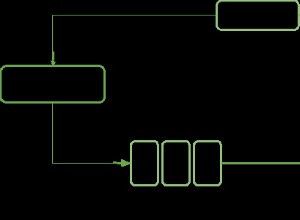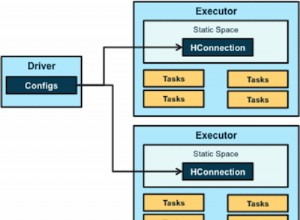Ho preso ispirazione da questo https://gist.github.com/mizrael/a061331ff5849bf03bf2 e un'implementazione estesa che ha funzionato per me. Ho creato una falsa implementazione dell'interfaccia IFindFluent e aveva una dipendenza dall'interfaccia IAsyncCursor, quindi ho fatto una falsa implementazione anche di quella e usando quella in cambio del metodo mock che volevo impostare. In quella falsa implementazione, ho inizializzato un enumerabile e lo ho restituito in un metodo che sto usando. Puoi ancora essere più creativo e giocare con qualsiasi cosa tu voglia restituire. Finora questo ha funzionato per me.
Ecco un'implementazione falsa.
public class FakeFindFluent<TEntity, TProjection> : IFindFluent<TEntity, TEntity>
{
private readonly IEnumerable<TEntity> _items;
public FakeFindFluent(IEnumerable<TEntity> items)
{
_items = items ?? Enumerable.Empty<TEntity>();
}
public FilterDefinition<TEntity> Filter { get => throw new NotImplementedException(); set => throw new NotImplementedException(); }
public FindOptions<TEntity, TEntity> Options => throw new NotImplementedException();
public IFindFluent<TEntity, TResult> As<TResult>(MongoDB.Bson.Serialization.IBsonSerializer<TResult> resultSerializer = null)
{
throw new NotImplementedException();
}
public long Count(CancellationToken cancellationToken = default)
{
throw new NotImplementedException();
}
public Task<long> CountAsync(CancellationToken cancellationToken = default)
{
throw new NotImplementedException();
}
public long CountDocuments(CancellationToken cancellationToken = default)
{
throw new NotImplementedException();
}
public Task<long> CountDocumentsAsync(CancellationToken cancellationToken = default)
{
throw new NotImplementedException();
}
public IFindFluent<TEntity, TEntity> Limit(int? limit)
{
throw new NotImplementedException();
}
public IFindFluent<TEntity, TNewProjection> Project<TNewProjection>(ProjectionDefinition<TEntity, TNewProjection> projection)
{
throw new NotImplementedException();
}
public IFindFluent<TEntity, TEntity> Skip(int? skip)
{
throw new NotImplementedException();
}
public IFindFluent<TEntity, TEntity> Sort(SortDefinition<TEntity> sort)
{
throw new NotImplementedException();
}
public IAsyncCursor<TEntity> ToCursor(CancellationToken cancellationToken = default)
{
throw new NotImplementedException();
}
public Task<IAsyncCursor<TEntity>> ToCursorAsync(CancellationToken cancellationToken = default)
{
IAsyncCursor<TEntity> cursor = new FakeAsyncCursor<TEntity>(_items);
var task = Task.FromResult(cursor);
return task;
}
}
public class FakeAsyncCursor<TEntity> : IAsyncCursor<TEntity>
{
private IEnumerable<TEntity> items;
public FakeAsyncCursor(IEnumerable<TEntity> items)
{
this.items = items;
}
public IEnumerable<TEntity> Current => items;
public void Dispose()
{
//throw new NotImplementedException();
}
public bool MoveNext(CancellationToken cancellationToken = default)
{
throw new NotImplementedException();
}
public Task<bool> MoveNextAsync(CancellationToken cancellationToken = default)
{
return Task.FromResult(false);
}
}
Ecco come ho impostato il mio metodo fittizio per restituire ciò che volevo per il mio test unitario.
mockParticipantRepository
.Setup(x => x.FindByFilter(It.IsAny<FilterDefinition<Participant>>()))
.Returns(new FakeFindFluent<Participant, Participant>(participantsByRelation));
Spero che questo sia utile.




